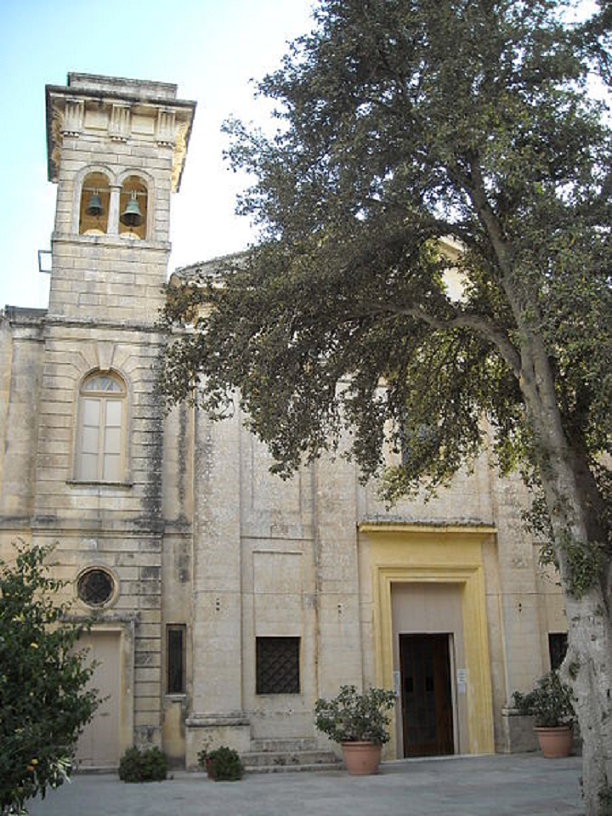White Vestments.
English: Saint Andrew Corsini, in Prayer.
Deutsch: Hl. Andreas Corsini, im Gebet.
Date: 1630-1635.
Current location: Uffizi Gallery, Florence, Italy.
Source/Photographer: The Yorck Project: 10.000 Meisterwerke der Malerei.
DVD-ROM, 2002. ISBN 3936122202.
Distributed by DIRECTMEDIA Publishing GmbH.
(Wikimedia Commons)
Saint Andrew, of the noble family of Corsini, was born at Florence, and, from his birth, was Consecrated to The Blessed Virgin. His mother dreamed that she had given birth to a wolf, which, on entering into The Carmelite Church, was suddenly changed into a lamb.
Her son, indeed, led a dissolute life in his youth. But Jesus exerted His redeeming power over him and Andrew entered The Carmelite Order and soon became its Head in Tuscany (Communion).
Having thus turned to good use the talents with which God had favoured him, he rose to a still-higher dignity (Gospel) and, as Bishop of Fiesole, he had a share in The Priesthood of Christ, and accomplished His work of reconciling Souls, with God.
Thus, having been sent to Bologna, as Papal Legate, by Pope Urban V, he succeeded by his great prudence in extinguishing the burning hatred which had armed the citizens against each other (Epistle). The Blessed Virgin foretold him his death, which occurred in 1373.
Made wolves by sin, let us, like Saint Andrew Corsini, become lambs by Penance, in order that, "following in the footsteps of this Holy Confessor, we may obtain the same rewards" (Collect).
Mass:
Státuit, of a Confessor Bishop.
The Church of Santa Maria del Carmine,
Florence, Italy,
which contains the Corsini Chapel.
This File: 9 July 2006.
User: Sailko.
(Wikimedia Commons)
English: The Corsini Chapel,
Church of Santa Maria del Carmine,
Florence, Tuscany, Italy.
Français: Église Santa Maria del Carmine, Florence, Toscane, Italie. La chapelle Corsini.
Photo: 23 September 2007.
Source: Own work.
(Wikimedia Commons)
The following Text is from Wikipedia - the free encyclopaedia,
unless otherwise stated.
Andrew Corsini, O.Carm. (1302 – 1373), was an Italian Carmelite Friar and Bishop of Fiesole, who is honoured as a Saint within The Catholic Church.
Corsini was born in Florence on 30 November 1302, a member of the illustrious Corsini family. Wild and dissolute in youth, he was startled by the words of his mother about what had happened to her before his birth, and, becoming a Carmelite Friar in his native City, began a life of great mortification. He studied at Paris and Avignon.
On his return, Corsini became the "Apostle of Florence". He was regarded as a prophet and a wonderworker. After being elected to The Office of Bishop of Fiesole, which he did not want, he fled. He was discovered by a child at The Charterhouse at Enna, and was subsequently compelled to accept the honour.
English: Church of Santa Maria del Carmine, Florence, Tuscany, Italy.
The Vault over the entire Nave, with the Apse on the Left and the main entrance on the Right.
Français: Église Santa Maria del Carmine, Florence, Toscane, Italie. La voûte au-dessus de la nef dans son intégralité, l'abside étant sur la gauche et l'entrée principale sur la droite.
Photo: 23 September 2007.
Source: Own work.
(Wikimedia Commons)
Corsini redoubled his austerities as a Bishop, was lavish in his care of the poor, and was sought for everywhere as a peacemaker, notably at Bologna, whither he was sent, as Papal Legate, to heal the breach between the nobility and the people.
After twelve years in the Episcopacy, Corsini died in his native Florence in 1373, at the age of seventy-one. In 1675, after his Canonisation, the members of the Corsini family had The Corsini Chapel built in The Carmelite Church of Our Lady of Mount Carmel, in Florence, Italy, to provide his Remains a more suitable resting place.
The Corsini Chapel, Basilica of Saint John Lateran, Rome.
San Giovanni in Laterano is the Cathedral Church of Rome.
Photo: October 2008.
Source: Own work.
Author: Maros M r a z (Maros).
(Wikimedia Commons)
In 1373, while Corsini had been Celebrating The Midnight Mass of Christmas Eve, The Blessed Virgin appeared to him and told him he would leave this world on The Feast of The Epiphany. It came to pass, as the vision had told him, and he died on that day.
Miracles were so multiplied at his death that Pope Eugene IV permitted a public devotion to him, immediately. It was only in 1629 that Pope Urban VIII formally confirmed this. His Feast is kept on 4 February, in The Carmelite Order, and in the Cities of Florence and Fiesole.
In the Early-18th-Century, Pope Clement XII, born Lorenzo Corsini, erected, in the Roman Basilica of Saint John Lateran, a magnificent Chapel dedicated to his 14th-Century kinsman.
English: The Church of Santa Maria del Carmine, Florence, Italy,
which contains the Corsini Chapel.
Français: l'église Santa Maria del Carmine de Florence la nuit.
Photo: October 2010.
Source: Own work.
Author: Emmanuel BRUNNER Manu25.
(Wikimedia Commons)














































